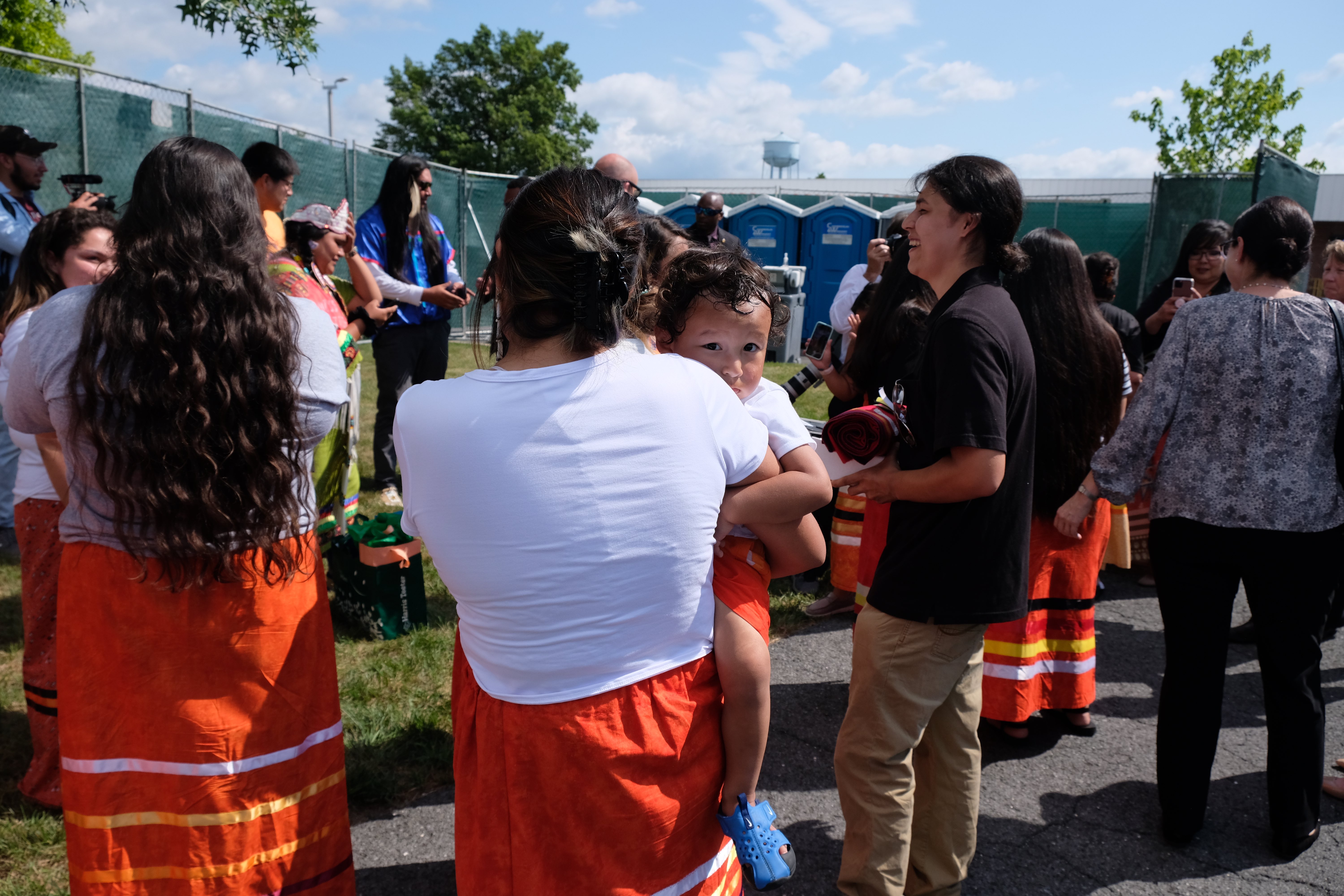
- Details
- By Jenna Kunze
CARLISLE, Pa. — With the cedar boxes of nine of her ancestors’ remains behind her, 21-year-old Asia Black Bull addressed a crowd of roughly 60 visitors at the Carlisle Barracks’ transfer ceremony Wednesday morning.
She explained that when members of the Rosebud Sioux Youth Council—also called the Sicangu Youth Council—arrived at the graveyard of the United States’ first off-reservation Indian boarding school on Monday, it was raining as though their ancestors were crying out to them.
Want more Native News? Get the free daily newsletter today.
On Wednesday, the U.S. Office of Army Ceremonies completed its fourth-ever exhumation, returning the remains of nine Rosebud Sioux youth to their next of kin.
“Now you see it’s a sunny day, because they’re going home,” Black Bull said. Black Bull was among 12 members of the youth council in attendance that helped guide the mission to bring their ancestor’s home. The group got started six years ago, when a stop in Carlisle on the way home from a leadership summit in D.C. put them face-to-face with the reality that many of their ancestors never left the boarding school they were forced to go to 142 years ago.
“It takes our youth to take our youth home,” tribal councilman who helped facilitate the trip, Russell Eagle Bear, said to an audience of U.S. Army members, archaeologists and anthropologists that worked on the exhumation, politicians, descendants, tribal leaders, and youth.
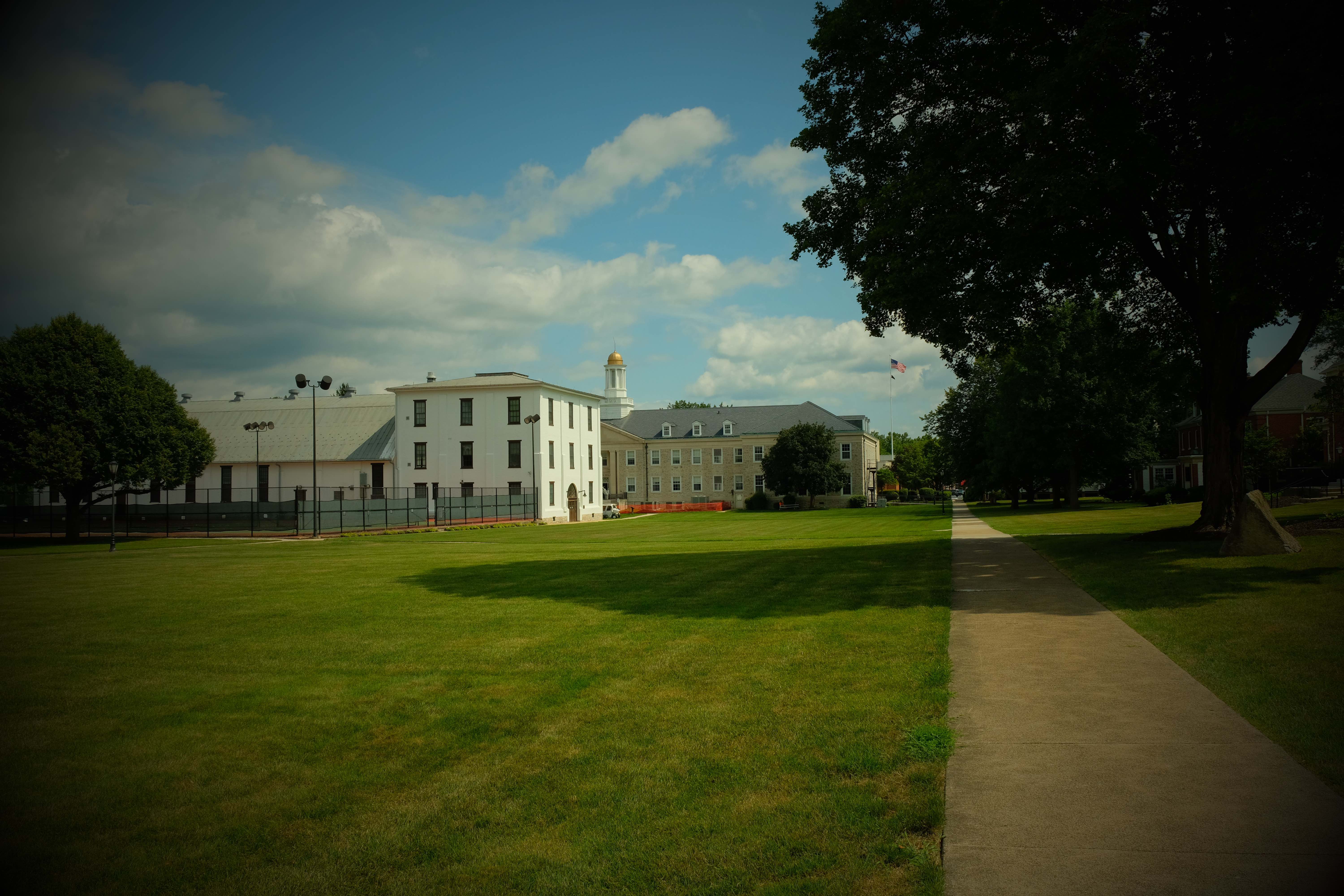 Former school grounds in the historic section of the Carlisle Barracks, with a view of Jim Thorpe gymnasium where the former Olympian trained as a student at Carlisle. (Photo/Jenna Kunze)
Former school grounds in the historic section of the Carlisle Barracks, with a view of Jim Thorpe gymnasium where the former Olympian trained as a student at Carlisle. (Photo/Jenna Kunze)
First to come, among the first to leave
Five of the nine students exhumed were among the first class to come to Carlisle Indian Industrial School by boat and train on Oct. 6, 1879. The four others joined them within the first four years of the school’s opening, according to school identification cards preserved online through the Carlisle Indian School Digital Research Center, run by nearby Dickinson College.
South Dakota Sen. Mike Rounds (R), who helped advance the tribe’s conversation with the Army over the course of six years, said the nine Rosebud Sioux members were “robbed of their childhoods.” The senator honored each child by saying aloud their name, including:
Rose Long Face (Little Hawk), Dennis Strikes First (Blue Tomahawk), Maud Little Girl (Swift Bear), Alvan (Kills Seven Horses) and Dora Her Pipe (Brave Bull)—who all arrived at Carlisle in 1879. Within the next four years, Friend Hollow Horn Bear, Warren Painter (Bear Paints Dirt), Lucy Take the Tail (Pretty Eagle), and Ernest Knocks Off (White Thunder) also went to the school.
Each child was given an English first name when they arrived. Most of their “second” names are their Lakota names translated into English, and the names noted in parenthesis represent their last names.
The children were recruited from their homes on the Rosebud Sioux and Pine Ridge Reservations by school founder and superintendent, Richard Henry Pratt. Upon arrival, students were stripped of their Native names, clothes, language and cultural practices in the school’s effort to “kill the Indian, save the man,” according to boarding school survivor Luther Standing Bear’s novel, “My People the Sioux.”
Over the school’s 39-year history, roughly 7,800 Native children from nearly every tribal nation in the country were forcibly removed from their homes and sent to Carlisle as part of the U.S. government’s assimilationist agenda, according to records from the Cumberland Valley Historical Society in downtown Carlisle.
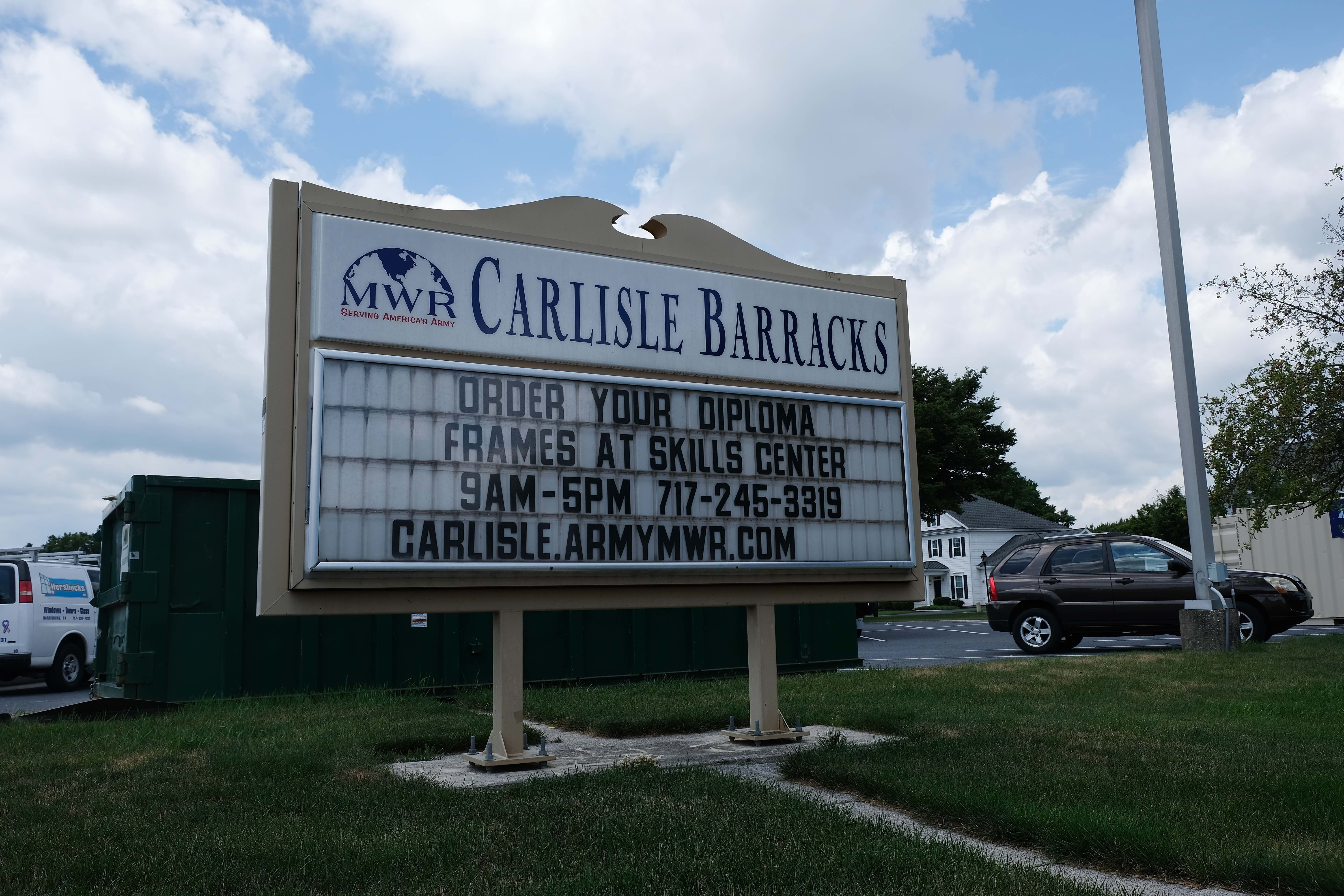 Carlisle Barracks is now the site of the U.S. Army War College. (Photo/Jenna Kunze)
Carlisle Barracks is now the site of the U.S. Army War College. (Photo/Jenna Kunze)
One hundred and ninety-four children—including 14 of whom whose identities are unknown—died at the school. Local newspapers from the time show that many students died as a result of tuberculosis or pneumonia, but not all the causes of deaths were documented. The children’s remains weren’t returned to their home communities due to financial constraints for about the first 25 years of the school’s operations, said Jim Gerencser, an archivist at the Carlisle Indian School Digital Research Center. Instead, they were buried at a school cemetery.
When the school closed in 1918, the cemetery was transferred into Army control. Carlisle Barracks are currently part of the U.S. Army War College.
‘The worst parts of our history’
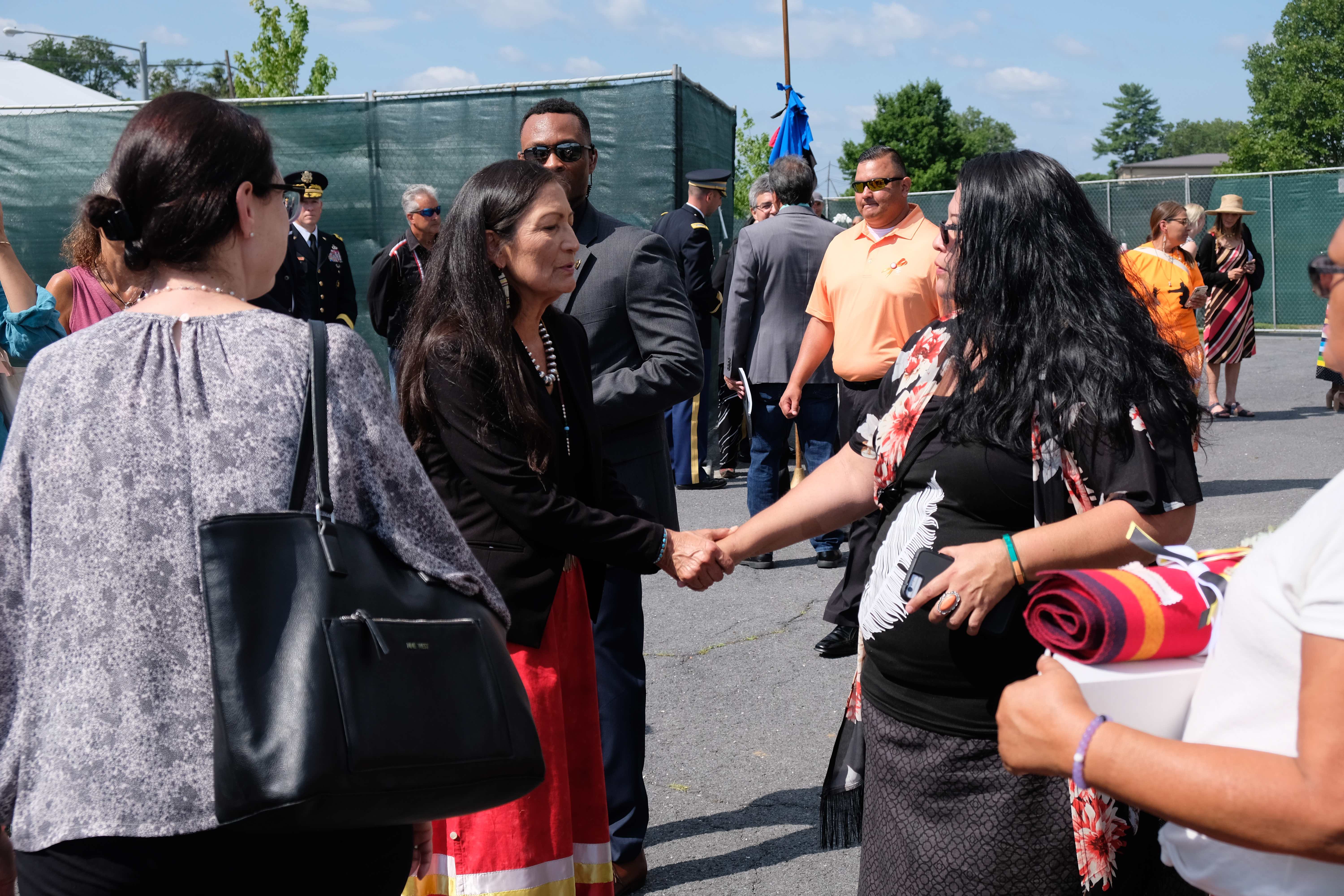 Sec. Deb Haaland hears from a tribal member after the ceremony. (Photo/Jenna Kunze)U.S. Department of the Interior Secretary Deb Haaland (Laguna Pueblo), donning a red ribbon skirt and black Nike sneakers, was among those seated in folding chairs at the entrance to the cemetery on Wednesday.
Sec. Deb Haaland hears from a tribal member after the ceremony. (Photo/Jenna Kunze)U.S. Department of the Interior Secretary Deb Haaland (Laguna Pueblo), donning a red ribbon skirt and black Nike sneakers, was among those seated in folding chairs at the entrance to the cemetery on Wednesday.
“I wish so much that this was not a part of intergenerational trauma,” Haaland said, standing beside nine photos of each exhumed Rosebud Sioux child. She shared that she’s “a product of boarding schools”—her maternal grandparents were taken at 8 years old from their reservation and brought to boarding school—and added that Americans are not often taught about “the worst part of our history.”
Carlisle was just one of 367 Indian boarding schools nationwide, according to data from the Native American Boarding School Healing Coalition.
Haaland concluded that her position as Interior secretary—which formerly managed many of the boarding schools—mixed with her personal history as an Indigenous woman, motivated her to announce last month the first-ever federal initiative to examine the history of boarding schools and bring lost children home.
“We want our children home no matter how long it takes,” she said.
‘I guess we have a movie star here’
Actor and activist Mark Ruffalo, who previously threw his support behind Haaland ahead of her confirmation, sat beside friend and supporter Kevin Killer, president of the Oglala Sioux Tribe, on Wednesday.
Eagle Bear joked that, while he didn’t recognize the star, the kids sure did. After the ceremony, members of the youth council flocked to Ruffalo for selfies.
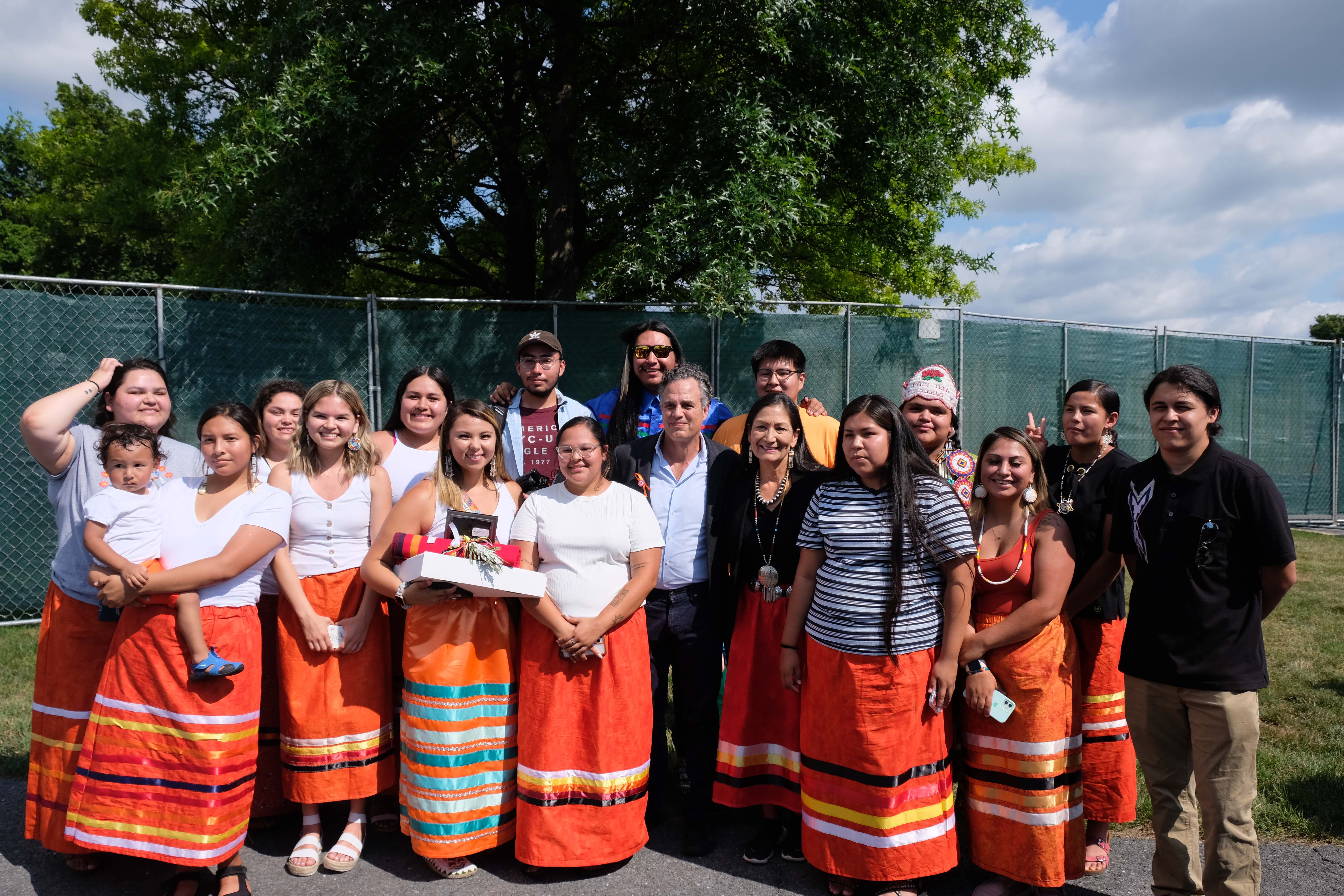 Members of the Sicangu Youth Council pose with Interior Secretary Deb Haaland and actor and activist Mark Ruffalo. (Photo/Jenna Kunze)
Members of the Sicangu Youth Council pose with Interior Secretary Deb Haaland and actor and activist Mark Ruffalo. (Photo/Jenna Kunze)
Ruffalo said he first became involved with Indigenous issues fighting fracking in New York state in 2011, and was inspired to attend Wednesday's ceremony to bring attention to the “ugly” history of boarding schools little known to many Americans.
“When you talk to Native people, within the first ...10 minutes you’ll hear stories about the boarding schools,” Ruffalo told Native News Online. “This is an open wound that America has to heal.”
Ruffalo said he’s committed to using his platform to help get the unknown number of lost children still interred at boarding schools across the country returned home. He said he’s inspired by the work of the youth council, which mirrors the youth movement that launched the pipeline protests in Standing Rock.
“Tell me where the youth of the Native people are going, and I will follow,” Ruffalo said.
Not done yet
After the dignified transfer ceremony on Wednesday, where Army officials presented each primary next of kin with their ancestor’s remains in a cedar box, along with a national flag, the Rosebud Sioux youth council set off on a 1,400-mile journey home.
Two vans and a car will follow the reverse route the children took 142 years ago to come to Carlisle. At Sioux City, Iowa, the tribe will be met by other tribal members and escorted to the exact landing where the children were taken on their journey to Carlisle, which began in steamboats, according to Russell Eagle Bear.
Most of the children will be reburied at the tribe’s cemetery, and two will be buried at their descendant’s homes, he said.
In between cracking light hearted jokes, Eagle Bear reminded the crowd that this isn’t the end of the road for the Rosebud Sioux Tribe: some of their relatives still remain interred at the Carlisle cemetery.
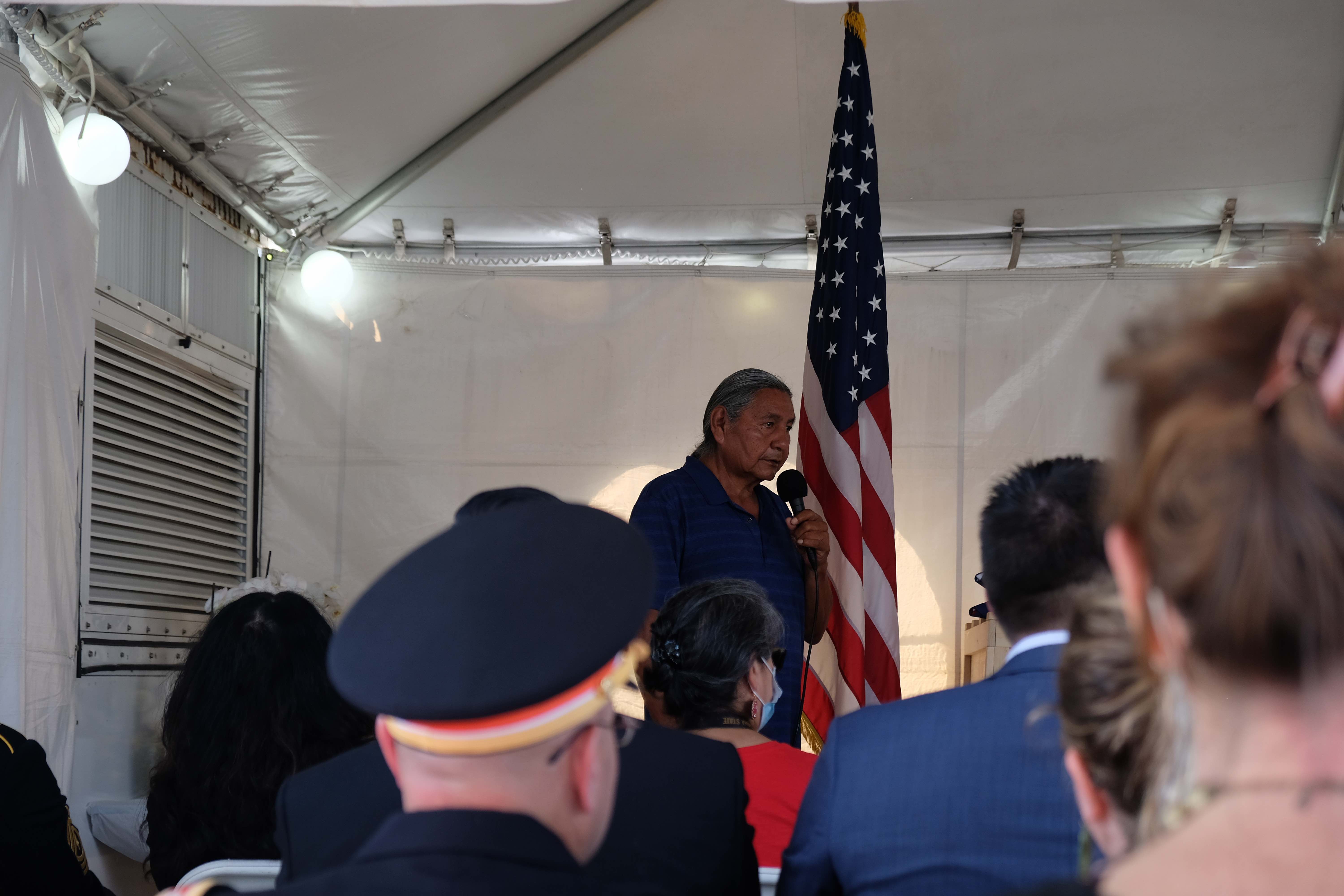 Russell Eagle Bear addressing the crowd at Carlisle. (Photo/Jenna Kunze)
Russell Eagle Bear addressing the crowd at Carlisle. (Photo/Jenna Kunze)
“We’re going to make sure that each tribe is contacted, and each child brought home,” Eagle Bear said in closing.
At least 173 children still remain buried at the Carlisle Barracks. Past repatriation efforts began in 2017, and 12 children have previously been exhumed to their relatives from the Northern Arapaho, Blackfeet, Oglala Sioux, Oneida, Omaha, Modoc, Iowa, and Aleutian Alaska Native communities.
At the end of the ceremony, Rosebud Sioux youth lined up to welcome their ancestors' remains into their van. While members of the Army transferred the boxes from stage to van, members of the youth council sang in Lakota as their reclaimed relatives prepared for their final journey: “We are going home now.”
Tell Us What You Think
More Stories Like This
Native News Weekly (August 25, 2024): D.C. BriefsUS Presidents in Their Own Words Concerning American Indians
Happy New Year 2026 from Native News Online
Next on Native Bidaské: Covering Indian Country: Lessons from 2025 & the Road Ahead
The Stories That Started to Define Cultivating Culture in 2025
Help us defend tribal sovereignty.
At Native News Online, our mission is rooted in telling the stories that strengthen sovereignty and uplift Indigenous voices — not just at year’s end, but every single day.
Because of your generosity last year, we were able to keep our reporters on the ground in tribal communities, at national gatherings and in the halls of Congress — covering the issues that matter most to Indian Country: sovereignty, culture, education, health and economic opportunity.
That support sustained us through a tough year in 2025. Now, as we look to the year ahead, we need your help right now to ensure warrior journalism remains strong — reporting that defends tribal sovereignty, amplifies Native truth, and holds power accountable.
 The stakes couldn't be higher. Your support keeps Native voices heard, Native stories told and Native sovereignty defended.
The stakes couldn't be higher. Your support keeps Native voices heard, Native stories told and Native sovereignty defended.
Stand with Warrior Journalism today.
Levi Rickert (Potawatomi), Editor & Publisher

